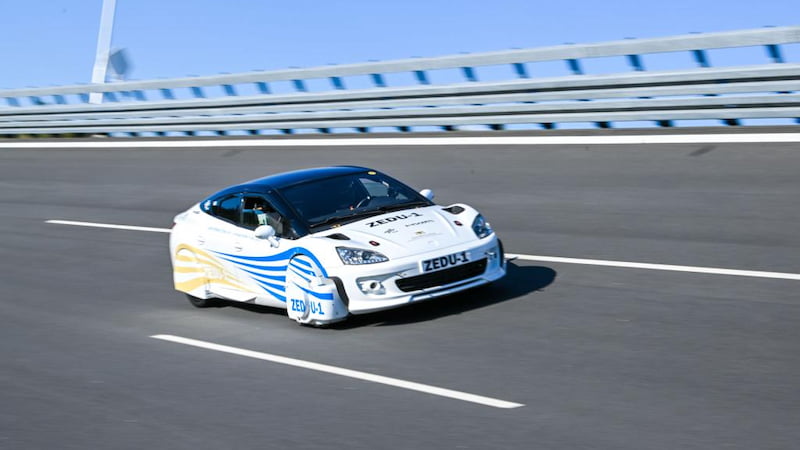
The German Aerospace Center (DLR) has developed an electric car that is considered the most environmentally friendly road vehicle in the world. The ZEDU-1 is not only almost emission-free, but also reduces the emission of microplastics caused by abrasion from tires and brakes.
Electric cars will presumably shape the mobility of the future. However, for e-cars to actually be environmentally friendly, two requirements must be met. On the one hand, the “tank filling” of the vehicles must come from sustainable sources. On the other hand, electric cars must not leave behind any waste products.
While batteries and sustainable energy sources make powering electric cars relatively green, when it comes to the environment, many often don’t think about the actual use of their vehicles. Because apart from the drive, a vehicle produces further environmentally harmful waste.
Abrasion from tires and brakes contributes to the formation of microplastics, for example. The German Aerospace Center (DLR) now wants to iron out these disadvantages with a prototype of the so-called Zero Emission Drive Unit – Generation 1 (ZEDU-1).
ZEDU-1: The world’s most environmentally friendly electric car?
According to DLR, the ZEDU-1 is said to be the world’s most environmentally friendly road vehicle. In addition to an electric drive, the e-car also focuses on sustainability in other areas, such as tires and brakes. The reason is that wear and tear often occurs.
That is why the ZEDU-1 does not have a disc brake in the wheel housing, but has a multi-disk brake in the electric motor-gear unit. The discs of the brake are located in an oil container. The system in turn pumps this regularly through a filter and thus eliminates the abrasion that has occurred.
At the same time, an induction brake based on magnetic fields helps the vehicle to brake. This type of brake is almost completely wear-free.
Hardly any emissions of microplastics and fine dust
The concept has a high level of efficiency and is also considered suitable for everyday use. From its largest, the ZEDU-1 can be classified in the group of compact cars. The built-in electronics should also fully recover the braking energy generated. A housing in turn seals off the tires of the e-car.
There are also sustainable reasons for this. Enclosing the tires creates a vacuum, so that the tire abrasion accumulates inside the wheel housing. The electric car then extracts the abrasion-air mixture and filters it.
This means that no microplastics get into the environment and the end result is that the ZEDU-1 emits mostly clean air. This almost always works at speeds of up to 50 kilometers per hour. At higher speeds, however, the cleaning performance drops to around 70 to 80 percent.
Also interesting:
Source: https://www.basicthinking.de/blog/2022/10/07/umweltfreundlichstes-elektroauto-dlr-zedu-1/


